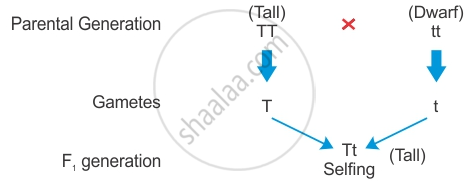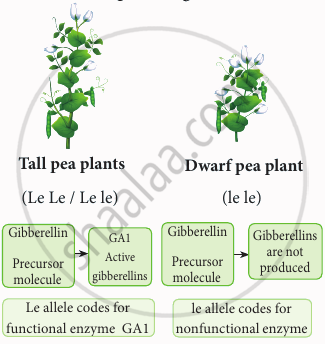Topics
Sexual Reproduction in Flowering Plants
- Flower - a Fascinating Organ of Angiosperms
- Parts of Flower
- Accessory Organs
- Essential Parts of Flower: Androecium
- Essential Parts of Flower: Gynoecium
- Sexual Reproduction in Flowering Plants
- Pre-fertilisation in Flowering Plant: Structures and Events
- Development of Anther
- Transverse Section of Mature Anther (Microsporangium)
- Microsporogenesis
- Microspores and Pollen Grains
- Development of Male Gametophyte
- Advantages and Disadvantages of Pollen Grains
- Structure of Ovule (Megasporangium)
- Types of Ovules
- Megasporogenesis
- Development of Female Gametophyte or Embryo Sac
- Pollination
- Outbreeding Devices
- Artificial Hybridization
- Kinds of Pollination
- Self Pollination (Autogamy)
- Cross Pollination
- Agents of Pollination
- Abiotic Agents
- Biotic Agents
- Fertilization Process
- Fertilization Process
- Post Fertilisation in Plant: Structures and Events
- Development of Endosperm
- Post Fertilization in Plant: Development of Embryo (Embryogeny)
- Development of Seed
- Development of Fruit
- Apomixis
- Polyembryony
Reproduction in Organisms
- Life Span of Organisms
- Maximum Life Span of Organisms
- Reproduction in Organisms
- Types of Reproduction
- Asexual Reproduction
- Sexual Reproduction in Animals
- Asexual Reproduction in Plant
- Asexual Reproduction in Animal
- Budding
- Vegetative Reproduction
- Natural Vegetative Reproduction
- Artificial Vegetative Reproduction
- Artificial Vegetative Reproduction
- Artificial Vegetative Reproduction
- Fission
- Budding
- Sporulation (Sporogenesis)
- Fragmentation
- Different Phases in Sexual Reproduction
- Sexual Reproduction in Animals
- Pre-fertilisation Events in Organisms
- Fertilisation in Organisms
- Post-fertilisation Events in Organisms
Reproduction
Genetics and Evolution
Human Reproduction
Reproductive Health
Biology and Human Welfare
Environmental Issues
- Environmental Issues
- Prevention of Air Pollution
- Controlling Vehicular Air Pollution: a Case Study of Delhi
- Introduction of Water Pollution and Its Control
- Effects of Domestic Sewage and Industrial Effluents on Water
- A Case Study of Integrated Waste Water Treatment
- Solid Wastes
- Agrochemicals and Their Effects
- Radioactive Wastes
- Greenhouse Effect and Climate Change
- Ozone Depletion in the Stratosphere
- Degradation by Improper Resource Utilisation and Maintenance
- Deforestation and Its Causes
- Radioactive Waste Management and E-waste
- Solid Waste Management
- Noise Pollution
- Environmental Issues
Biotechnology
Principles of Inheritance and Variation
- Introduction of Principles of Inheritance and Variation
- Mendelism
- Terminology Related to Mendelism
- Mendel’s experiments on pea plant
- Monohybrid Cross
- Gregor Johann Mendel – Father of Genetics
- Punnett Square
- Back Cross and Test Cross
- Mendelian Inheritance - Mendel’s Law of Heredity
- The Law of Dominance
- The Law of Segregation (Law of Purity of Gametes)
- The Law of Independent Assortment
- Intragenic Interactions - Incomplete Dominance
- Intragenic Interactions - Codominance
- Gregor Johann Mendel – Father of Genetics
- Extensions of Mendelian Genetics (Deviation from Mendelism)
- Intragenic Interactions - Incomplete Dominance
- Intragenic Interactions - Dominance
- Intragenic Interactions - Codominance
- Multiple Alleles
- Intragenic Interactions - Pleiotropy
- Polygenic Inheritance
- Chromosomal Theory of Inheritance
- Historical Development of Chromosome Theory
- Comparison Between Gene and Chromosome Behaviour
- Chromosomal Theory of Inheritance: Law of Segregation
- Chromosomal Theory of Inheritance: Law of Independent Assortment
- Linkage and Recombination
- Sex Determination
- Sex Determination in Some Insects
- Sex Determination in Human
- Sex Determination in Birds
- Sex Determination in Honey Bees
- Concept of Mutation
- Pedigree Analysis
- Genetic Disorders
- Mendelian Genetics
- Chromosomal Abnormalities
- Heredity and Variation
- Linkage and Crossing Over
- Principles of Inheritance and Variation Question
Molecular Basis of Inheritance
- Introduction of Molecular Basis of Inheritance
- Deoxyribonucleic Acid (DNA) and Its Structure
- Structure of Polynucleotide Chain
- Packaging of DNA Helix
- Search for Genetic Material
- Introduction of Search for Genetic Material
- The Genetic Material is a DNA
- Properties of Genetic Material (DNA Versus RNA)
- The RNA World
- DNA Replication
- The Experimental Proof
- The Machinery and the Enzymes
- Protein Synthesis
- Introduction of Transcription
- Transcription Unit
- Transcription Unit and the Gene
- Types of RNA and the Process of Transcription
- Genetic Code
- Genetic Code
- Genetic Code
- tRNA – the Adapter Molecule
- Translation
- Regulation of Gene Expression
- Operon Concept
- Human Genome Project
- DNA Fingerprinting Technique
- Structure of DNA and RNA
- Structure of Nucleotide
- Rice Genome Project
- Molecular Basis of Inheritance (Questions)
Ecology
Evolution
- Origin and Evolution of Universe and Earth
- Theories of Origin of Life
- Evolution of Life Forms - a Theory
- Evidences for Biological Evolution
- Theories of Biological Evolution
- Adaptive Radiation
- Organic Evolution
- Hardy Weinberg’s Principle
- Brief Account of Evolution
- Human Evolution
- Darwinism
- Micro and Macro Evolution
- Speciation
- Evolution Stages
- Modern Synthetic Theory of Evolution
- Gene Flow and Genetic Drift
- Evolution
Human Health and Diseases
- Introduction of Human Health and Diseases
- Common Diseases in Human Beings
- Immunity
- Types of Immunity
- Vaccination and Immunization
- Allergies (Hypersensitivity)
- Autoimmunity
- Human Immune System
- Sexually Transmitted Diseases (STD)
- Cancer
- Introduction of Drugs and Alcohol Abuse
- Drugs and Alcohol Abuse
- Adolescence - Drug and Alcohol Abuse
- Addiction and Dependence
- Effects of Drug and Alcohol
- Prevention and Control of Drugs and Alcohol Abuse
- Infectious and Non Infectious Disease
- Maintaining Good Health, Yoga, Excercise
- Human Health and Diseases (Questions)
Strategies for Enhancement in Food Production
Microbes in Human Welfare
- Microbes in Human Welfare
- Microbes in Household Products
- Microbes in Industrial Production
- Microbes in Sewage Treatment
- Microbes in Production of Biogas
- Microbes as Biocontrol Agents
- Microbes as Biofertilizers
- Energy Generation
- Production and Judicious Use
- Microbes in Human Welfare
Biotechnology - Principles and Processes
- Process and Principles of Biotechnology
- Restriction Enzymes
- Cloning Vectors
- Competent Host (For Transformation with Recombinant DNA)
- Processes of Recombinant DNA Technology
Biotechnology and Its Application
Organisms and Populations
- Introduction of Organisms and Populations
- Ecology (Organism, Population, Community and Biome)
- Introduction of Organisms and Environment
- Major Abiotic Factors
- Responses to Abiotic Factors
- Population Attributes
- Population Growth
- Life History Variation
- Population Interactions
- Population and Ecological Adaptations
- Organisms and Populations (Questions)
Ecosystem
- Ecosystem
- Introduction and Types of Ecosystem
- Structure and Function of an Ecosystem
- Productivity
- Decomposition
- Concept of Energy Flow in an Ecosystem
- Ecological Pyramids
- Ecological Succession
- Nutrient Cycles
- Ecosystem Services
- Ecosystems Patterns
Biodiversity and Its Conservation
- Biodiversity
- Species on Earth and Species in India
- Patterns of Biodiversity
- Importance of Species Diversity to the Ecosystem
- Loss of Biodiversity
- Conservation of Biodiversity
- Endangered Organisms
- Importance of Biodiversity
- Extinction
- Red Data Book
- Biodiversity and Its Conservation (Questions)
Notes
The Law of Dominance:
Law of Dominance states that “When two homozygous individuals with one or more sets of contrasting characters are crossed, the characters that appear in the F1 hybrid are dominant and those that do not appear in F1 are recessive characters".
According to the law of dominance:
- The law of dominance is used to explain the expression of only one of the parental characters in a monohybrid cross in the F1 and the expression of both in the F2 generation. It also explains the proportion of 3:1 obtained at the F2.
- The characters are controlled by discrete units called factors, which are now called alleles.
- Factors occur in pairs.
- In a dissimilar pair of factors, one member of the pair is dominant and the other is recessive.
For example - Tallness in pea plants is a dominant character, while dwarfness is a recessive character.

- In a cross between pure tall and pure dwarf pea plant, the only tall character is expressed in all the individuals of F1 generation. As a result, tallness is the dominant character in pea plants, while dwarfness is a recessive character.
- Tallness in F1 hybrid is determined by genotype Tt, in which the dominant allele 'T' suppresses the recessive allele 't', thereby suppressing its expression in the phenotype.
- The Law of dominance is significant and true but it is not universally applicable.
Notes
Why Mendel’s pea plants are tall and dwarf?
The plant height is controlled by a single gene with two alleles. The reason for this difference in plant height is due to the following facts:
- the cells of the pea plant have the ability to convert a precursor molecule of gibberellins into an active form (GA1)
- Tall pea plants have one allele (Le) that codes for a protein (functional enzyme) which functions normally in the gibberellin-synthesis pathway and catalyzes the formation of gibberellins (GA1). The allele is dominant even if it is two (Le Le) or single (Le le), it produces gibberellins and the pea plants are tall. Dwarf pea plants have two recessive alleles (le le) which code for non-functional protein, hence they are dwarf.

Gene for plant height in Peas
Notes
Difference between dominance and Recessive:
| Dominance | Recessive |
| Dominance occurs when a factor (allele) expresses itself in the presence or absence of its dominant factor. | It can only manifest in the absence of or recessive factor allele. It can only manifest in the absence of or recessive factor allele. |
| Do not require the presence of a similar gene in the gene pair for the expression. | Require the presence of a similar gene in the gene pair for their effect. |
| More likely to be inherited | Less likely to be inherited. |
| E.g., Red colour flowers in pea. | E.g., White colour flowers in pea. |
If you would like to contribute notes or other learning material, please submit them using the button below.
